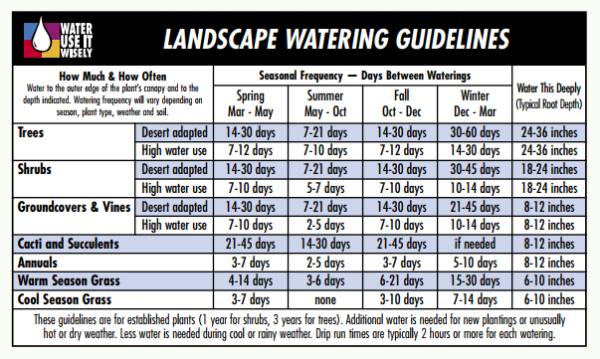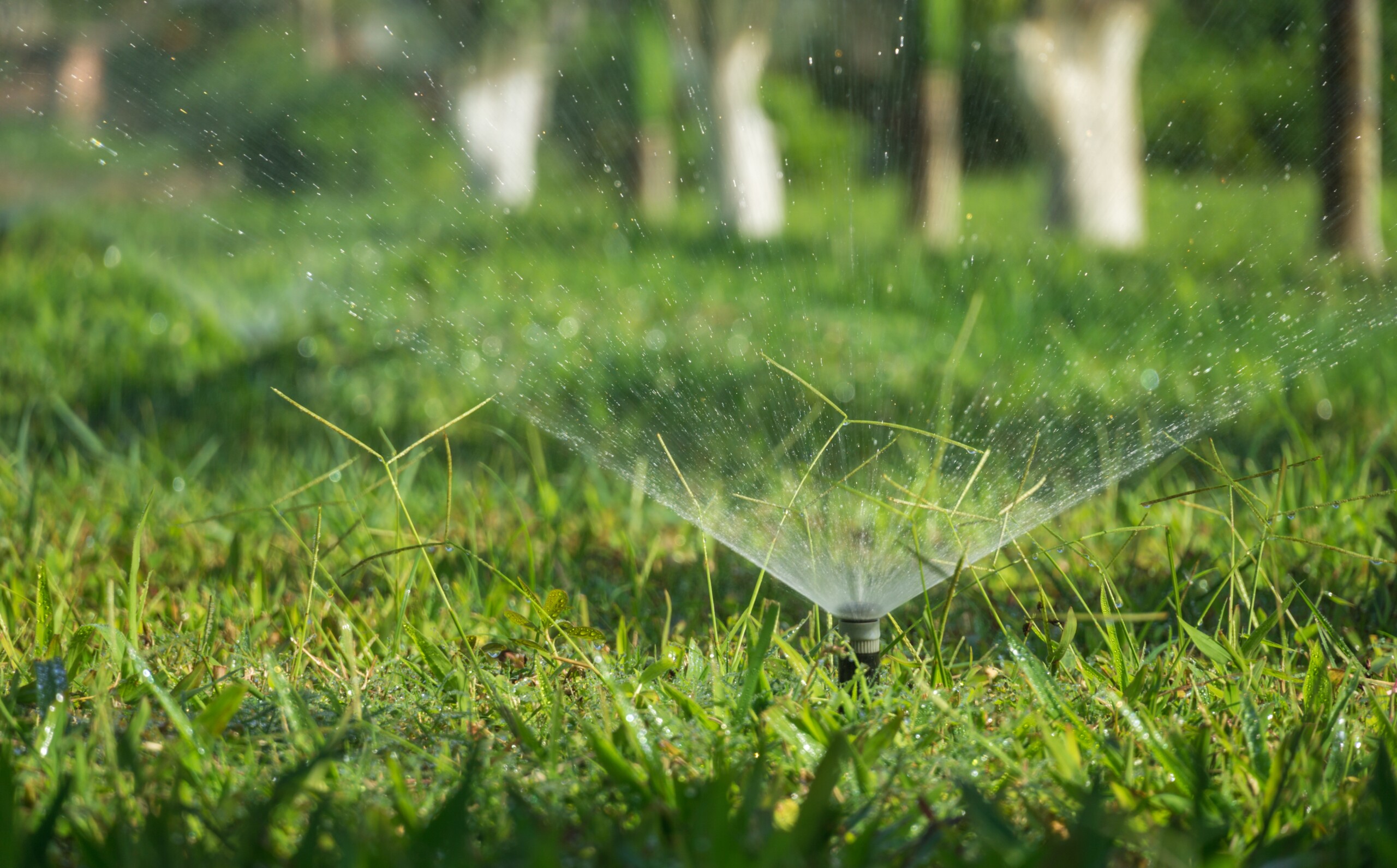Summertime means more water will be used outdoors. The good news is you can provide plants with water they need and still use water wisely in your landscape.
Here are some best practices for summer landscape irrigation:
- Water at night or early in the morning. Water evaporates quickly under the hot desert sun. Irrigate when the sun is not out to maximize the amount of water your plants receive.
- Test your irrigation system. If you are watering at the right time of day, then you may not notice a leak. Make it a habit to test your system at least once a month. It only takes a couple of minutes and can save huge amounts of water. Turn on the irrigation system while you are home during the day and check for signs of leaks, overwatering and broken or missing irrigation heads. Just make sure to change your schedule back to early mornings or nights after this test.
- Follow a schedule. Use the Water Use It Wisely watering guideline to make sure you are watering for the right season. You should change your irrigation schedule about four times a year.
- Embrace rainy days. Irrigation water should supplement rainwater received by your landscape. Although it may not happen often, turn off your irrigation system when it rains.
- Consider rainwater harvesting. There are many ways to integrate rainwater harvesting practices into your landscape. Consider making berms and basins to better capture rainwater and allow it to sink into the ground near plants. You can learn more about active and passive rainwater harvesting techniques on our conservation website.
- Wait to install new plants. The harsh summer climate is not a good time to transplant or install new landscape plants. Wait until fall when plants can better adapt and don’t require so much water to survive.
Shaina Shay is water resources and conservation specialist at Global Water Resources.

This sponsored content was previously published in the June issue of InMaricopa Magazine.



![Maricopa’s ‘TikTok Rizz Party,’ explained One of several flyers for a "TikTok rizz party" is taped to a door in the Maricopa Business Center along Honeycutt Road on April 23, 2024. [Monica D. Spencer]](https://www.inmaricopa.com/wp-content/uploads/2024/04/spencer-042324-tiktok-rizz-party-flyer-web-218x150.jpg)



![Locals find zen with Earth Day drum circle Lizz Fiedorczyk instructs a drum circle at Maricopa Community Center April 22, 2024. [Brian Petersheim Jr.]](https://www.inmaricopa.com/wp-content/uploads/2024/04/PJ_3922-Enhanced-NR-218x150.jpg)


![Shred-A-Thon to take place tomorrow An image of shredded paper. [Pixabay]](https://www.inmaricopa.com/wp-content/uploads/2024/03/shredded-paper-168650_1280-218x150.jpg)


![Alleged car thief released without charges Phoenix police stop a stolen vehicle on April 20, 2024. [Facebook]](https://www.inmaricopa.com/wp-content/uploads/2024/04/IMG_5040-218x150.jpg)



![City gave new manager big low-interest home loan City Manager Ben Bitter speaks during a Chamber of Commerce event at Global Water Resources on April 11, 2024. Bitter discussed the current state of economic development in Maricopa, as well as hinting at lowering property tax rates again. [Monica D. Spencer]](https://www.inmaricopa.com/wp-content/uploads/2024/04/spencer-041124-ben-bitter-chamber-property-taxes-web-100x70.jpg)